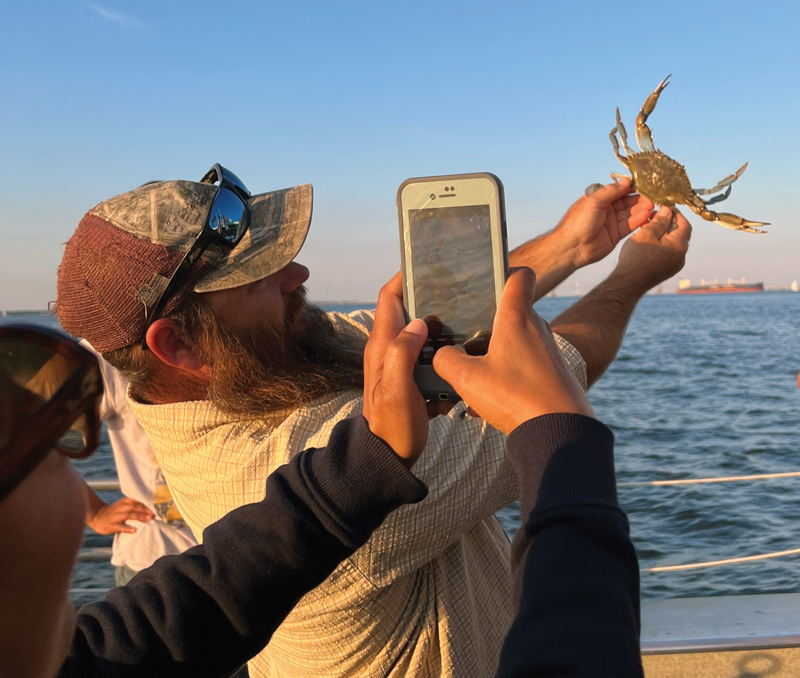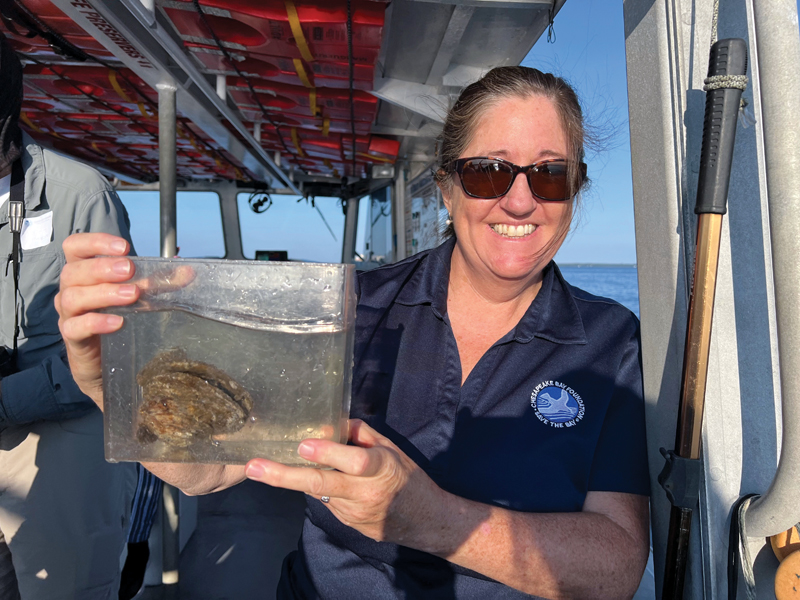Chesapeake Bay Foundation celebrates 50 years of educational programming
When I saw that one of the most well-known Chesapeake Bay enviornmental organizations, the Chesapeake Bay Foundation (CBF), was celebrating 50 years of educational programming, I was interested. When I learned that this stalwart environmental organization was, in part, marking the occasion by offering adults the opportunity to experience a couple of hours of educational programming usually reserved for school students, I jumped at the opportunity.

I knew it would be a fun couple of hours due to the hands-on nature of CBF’s programming and because they use Chesapeake-style workboats as platforms for teaching. I figured that I was in for a couple of pleasant hours on the water observing the CBF staff share a bunch of information that I already knew and that I’d enjoy watching others learn about some basic challenges facing the Bay. And that did happen, but that wasn’t all.
We were fortunate that our trip fell on a beautiful September evening. We departed the dock at the Phillip Merrill Environmental Center and headed out into the Bay just south of Annapolis. More than a half dozen huge ships were anchored waiting to enter Baltimore Harbor. The breeze was light, and the sky was blue as the sun slowly lowered to the west. In addition to the four CBF staff, 18 guests (17 adults and one tween) were aboard the boat as we headed right out to the parking lot of massive ships at anchor. There we did some simple water sampling as the ships towered over us like huge buildings on a city street.
Next, we headed to a natural oyster reef to dredge for oysters. We were encouraged to help pull up the dredge, place our catch in clear containers of Bay water, and pass the samples around. We all enjoyed the opportunity to hold and examine the oysters and other little critters that came up with them.

Our final activity was to cast a fishing net. One of the CBF staffers explained that the catch is different each time, making this activity exciting even for seasoned staff. That particular evening, we brought up several species of fish and a big blue crab and learned all kinds of interesting facts about each, with an emphasis on how they impact the whole ecosystem.
Knowledgeable and articulate, our hosts were inspiring
While I did learn a few new facts, more importantly I left feeling inspired and empowered. What was going on? I’d done water quality testing before. I knew the disheartening blue crab and oyster statistics. I’d even been a part of the Marylanders Grow Oysters program, chaperoning baby oysters in cages off our boat’s pier. I’d read about how Captain John Smith saw oysters in the Bay “thick as stones” in the early 17th century, sometimes piled so high that they might have been navigational hazards.
Somehow this little two-hour tour brought the facts from my head to my heart. Our CBF guides were so enthusiastic, knowledgeable, and articulate, explaining how cutting back pollution is one approach to saving the Bay, but also important is planting trees in Pennsylvania, growing oysters, and other proactive strategies. They really drove home the fact that with a little education, determination, and participation, collectively we have the power to change the trajectory of the health of the Bay.
I was surprised and impressed, and I wasn’t the only one. As we got off the boat at the end of the evening, I overhead one participant say to the captain something along the lines of, “My wife dragged me here today, but next time I will be the one dragging someone along. It was such a great experience; I want to share it with others!”
Tom Ackerman, vice president for education at CBF says, “Over the past 50 years we’ve seen time and again how hands-on experiences bring alive what students learn in the classroom. Whether paddling a canoe, pulling up a crab pot, or investigating the health of a nearby creek, we’re preparing students to solve the complex problems facing our society. In the next 50 years, we’ll continue to work towards our goal of ensuring all students have access to high-quality environmental education.”
Since 1973, CBF has led more than 1.5 million people in field investigations. Its outdoor education programs benefit both the environment and educational outcomes. School administrators may sign up to take students on a CBF field experience at cbf.org/education.




